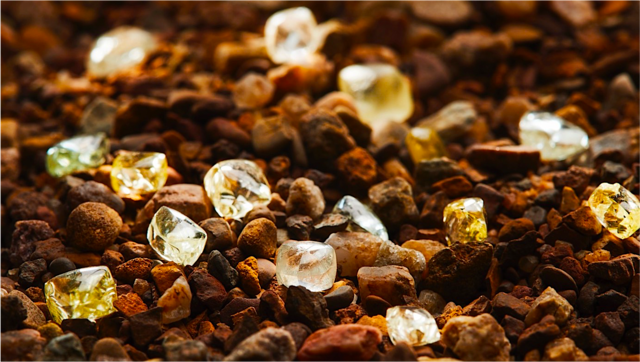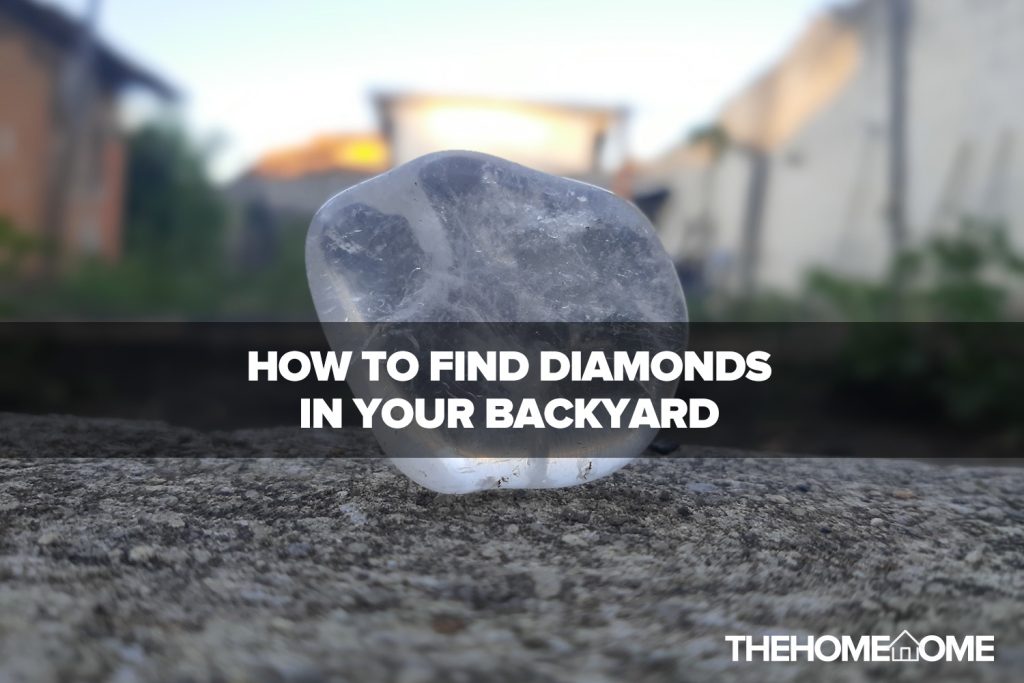Can you find diamonds in your backyard? The earliest diamonds were found in the 4th Century Bc and were discovered in India however that has seemed to change. You can find diamonds in your backyard but you need to know where exactly you should be looking.
If you live in certain areas in the United States where ancient volcanic activity has occurred, there is a good chance you can find diamonds or other valuable rocks like crystals.
Diamonds might have spent a few million years forming beneath the Earth’s surfaces and the genesis of this unique mineral will require extreme pressure and temperature to be found above ground. However, diamonds were brought to the surface 95 million years ago by a volcanic pipe.
This might sound surprising but there is an excellent possibility of finding diamonds in the yard or certain areas if you know where to look. Diamonds are considered to be one of the strongest minerals on Earth but finding Diamonds in Arkansas isn’t as laborious as many think.
So, if you are ready for some diamond hunting adventure in your backyard, this article points to where you should be looking.
A Brief History Of Diamonds

There is quite a lot of history surrounding how diamonds are found and most natural diamonds have ages between 1 billion and 3.5 years. The first diamonds were discovered in caves in India and this was between 4 and 6 B.C. Despite the long occupancy of diamonds on earth, they were discovered much later by humans.
Diamond’s glassy and nondescript appearance has them mistaken for glass or quartz and many years have gone by since their year of discovery. Diamonds are really rare as they are formed out of carbon which after being exposed to extreme heat and pressure forms diamonds hundreds of kilometers beneath the earth’s surface.
Due to the chemical composition of diamonds, they happen to be unique stones. However, there have been questions on why it’s possible to now find diamonds on the earth’s surface.
Magma, which is the earth’s molten rock is also developed under the same extreme condition as diamonds and this led to a violent volcanic eruption, sweeping up rocks, diamonds, and debris along the way.
Ways to Identify Diamonds In The Rough
We do have a specific idea of what diamonds ought to look like but this is often after they have been cleaned. It is important to do a visual evaluation test to know if it’s a raw diamond or simply a gemstone. The identification of rough diamonds requires specific gravity, hardness, and other physical properties as well.
However, there is a simple test that enables you to identify a raw uncut diamond in your backyard. Note that a rough diamond is simply a diamond that has not been polished to bring out its exceptional brilliance hence it’s important to learn how to identify it when found in places like your yard.
The thermal conductive test is the most common method of identifying diamonds however to quickly detect if the stone you have found is real or not, you can do a quick assessment test which involves checking out for important factors that correlate it with real diamonds. These assessment factors are color, cut, and carat weight.
In addition, you can test if the diamond is real using a glass full of water. Get a glass full of water and drop the found diamond in it. If it’s diamond, then the high density of the stone will cause it to fall to the bottom of the glass, but if it’s fake, it will float on the surface of the water.
How to Find Diamonds In Your Backyard
You can definitely find diamonds in your backyard especially if you live in certain areas of the United States where there has been recent volcanic activity. The real place you can find diamonds is in their original volcanic source, thanks to a violent volcanic eruption, diamonds can now be found on the surface.
Diamonds can be found on the top soil during spring or late summer through early fall. However, if you can’t find any on the surface, consider searching or digging through the first six inches to one foot of the soil.
Diamond hunting requires lots of hard work and some processes might require digging deep holes.
More diamonds can be found based on the season. There tend to be more successful results when there is rain or sun. Most surface diamonds are found two to three days after rain or on sunny days.
Alluvial Mining

Alluvial mining is the most common method of finding diamonds in your yard. Note that this method can be used for personal and commercial discoveries. Alluvial mining means extracting diamonds from riverbeds and it’s an inexpensive method.
The technique requires you to separate the mud and sand from the diamond you are looking for.
To find diamonds in your backyard, you can look through the alluvial deposits (riverbeds) of sand and mud from the old river and stream beds found in your backyard.
The panning method is another common method that can be used to scan the surface for any raw diamonds, this process involves sifting the soil and then sifting the soil in water to detect diamonds.
If I Find A Diamond, Can I Keep It?
It all depends on where the diamond is found. If the diamond is found on your own property or on property that allows you to keep it, then yes, you can keep it but taxes have to be paid on it. If you ever find a diamond ring then, you have to find the owner first or have the item turned in to the police.
Where is The Diamond Mostly Found?
Diamonds can be found in about 35 countries and geologically, natural diamonds can be found in two environments. One is the kimberlites which are pipe-like formations created from the result of volcanic and tectonic activity. Next are the placer deposits.
Here’s a list of countries that are known to produce industrial-grade diamonds.
- Russia
- South Africa
- China
- United States of America
- Australia
- Botswana
- Brazil
- Colorado
- Namibia
- Canada
- The Democratic Republic of Congo.
Wrapping Up
There are lots of popular excavation points available but this might not be possible for visiting if you are casually looking for diamonds in your area.
Keep in mind that finding diamonds in your backyard will only be possible if there has been wash-up riverbeds or body of water as a result of eroded volcanic rock that has been deposited from rivers, streams, and even glaciers miles from volcanoes over the years.

